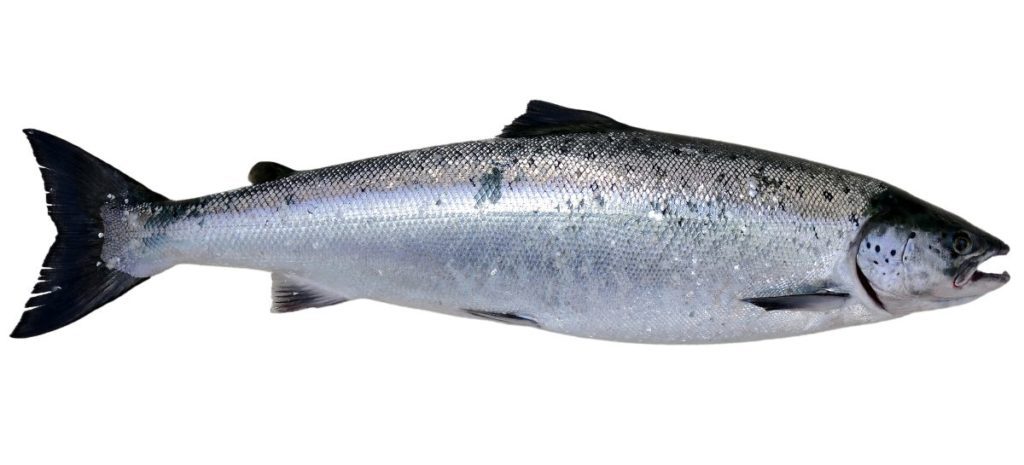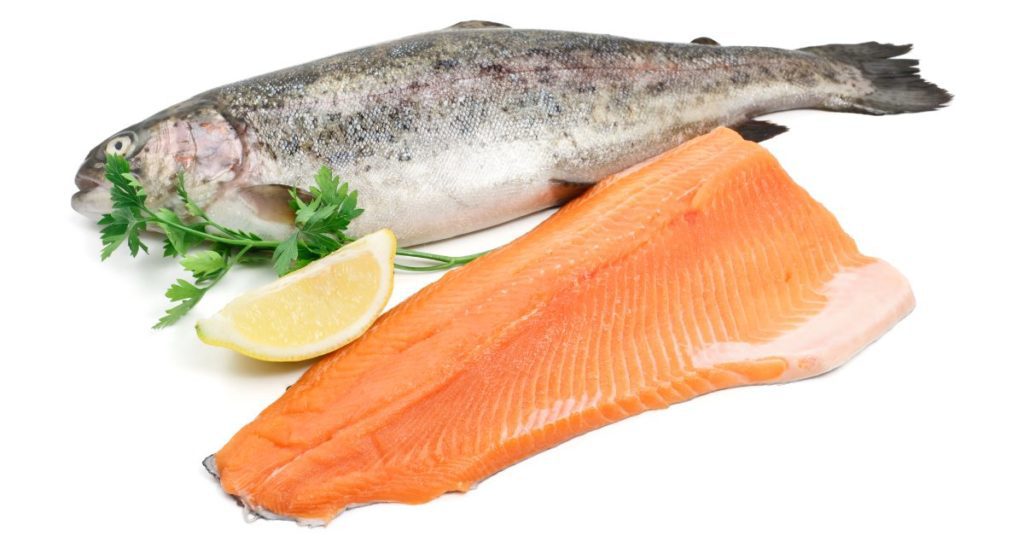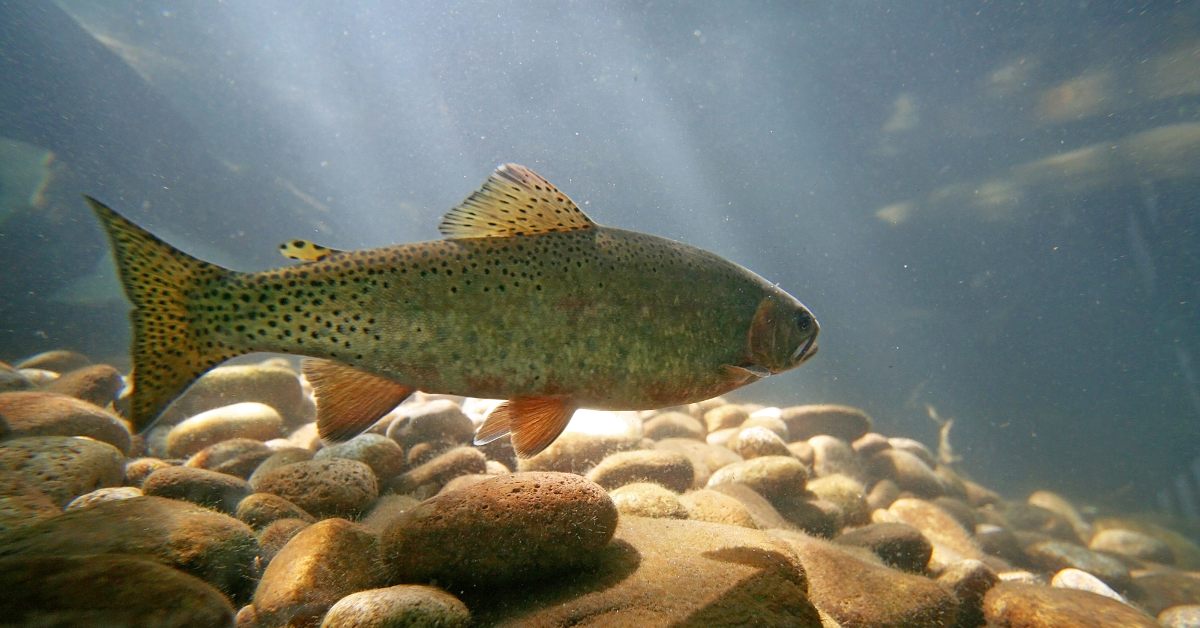If you want to start trying your hand at angling or just want to know the difference between salmon and trout for a choice at the market, this guide can help. While both of these fish are tasty and full of healthy nutrients, there are some significant differences between these two popular fish species.
So, how do you compare salmon vs trout? You can use several methods to pinpoint the type of fish, whether you are out in the water or at the grocery store.
Salmon vs Trout: A Comparison
Some similarities between these two fish can make it challenging to determine which one it is. However, once you know what to look for, it does get easier, and you can be a pro at it in no time.
As a general rule, salmon will be larger than trout and are anadromous, which means they can live in both fresh and saltwater environments. Trout are mainly freshwater fish only. However, the Steelhead and Rainbow species are also anadromous.
The Lifecycle of Salmon vs Trout
Salmon can live between 4 and 26 years, and their lifecycle consists of six different stages. First, this fish begins their life as an egg in freshwater and lives out its adulthood in saltwater. Then, they return to the freshwater rivers and streams each year to spawn and eventually die there.
Trout will live between 7 to 20 years and have five stages in their complete lifecycle. Except for the Rainbow and Steelhead trout, all other varieties remain in saltwater their entire life.
Characteristics Between Salmon and Trout
Although salmon begins its life in freshwater, you will find the adult fish in saltwater, either in the Pacific or the Atlantic Ocean. Salmon has a streamlined, slender body shape with a more pointed head shape. Their tail is forked, and their wrist of the tail is thin, making it easy to pick up by its tail.
Salmon contains between 10 and 13 scales, with few spots. Its maxilla, the bony plate along the jaw, does not extend past the eye. They typically exhibit silvery, pinkish-red to orange colors and will grow between 28 to 30 inches long and 8 to 12 pounds. However, there are some cases of wild salmon reaching upward of more than 4 feet long and weighing 100 pounds.
You will find most trout species in lakes, rivers, and streams, although the Steelhead and Rainbow varieties also survive in saltwater locations. Its body is thick and round, with a more rounded head. Trout tails will have a more square or convex shape, with a thicker wrist to the tail.
Trout sport between 13 and 16 scales, with many spots. The maxilla extends well beyond the eye. They will be brown or gray with orange markings, grow to 45 inches long, and weigh approximately 8 pounds.
Types of Salmon
The type of salmon you may find will depend on the location. There are eight different salmon types across the world.
In North America, you will find five different Pacific salmon types. These include:
- Chinook (King)
- Coho
- Chum
- Sockeye
- Pink
Alternatively, there are two other Pacific salmon that you will only find in Asia. They are Masu and Amago salmon. And finally, there is only one type of Atlantic salmon.

Types of Trout
You will find as many as 16 different types of trout, depending on where you look. They are broken down further by their locations.
The Atlantic trout varieties include:
- Adriatic
- Brown
- Marble
- Ohrid
- Sevan
When examining Pacific trout species, you will find:
- Apache
- Cutthroat
- Gila
- Golden
- Rainbow
- Steelhead
Alternatively, some trout species are closely related to the salmon family. These include:
- Aurora
- Brook
- Bull
- Dolly Varden
- Lake
- Splake
Because some trout belong to the salmon family, they can be difficult to distinguish if you don’t know what to look for.
How to Quickly Tell a Salmon vs Trout
Once you become familiar with the attributes of each fish species, it becomes easier to tell the difference between salmon and trout. While the number of scales or length and weight may not be a dead giveaway, other characteristics can point to one or the other in a snap.
- Is the tail fin square or forked?
- Is the wrist on the tail fin thin or broad?
- Does the fish have many spots or just a few?
- Is the shape of the head pointed or more round?
- How far does the maxilla go back along the head?
Once you remember these key elements, you will be a pro out on the water.
Nutritional Value of Salmon vs Trout
Although any fish will be a healthy choice for your plate, there are differences between these two species.
Both salmon and trout will provide an excellent source of protein, Omega-3 fatty acids, and multiple vitamins and minerals. However, salmon will come out on top as the better choice when comparing them side by side.

Let’s compare a 100-gram serving of each fish type.
Salmon
- Approximately 200 calories
- 22 grams of protein
- 3 grams of saturated fat
- High levels of Omega-3 fatty acids
- High levels of Vitamin D
- Contains potassium, Vitamin B12, and iron
- Less cholesterol than trout
Trout
- Approximately 140 calories
- 20 grams of protein
- 2 grams of saturated fat
- High levels of Omega-3 fatty acids
- High levels of Vitamin B
- Contains potassium, magnesium, and calcium
The Cost of Salmon vs Trout
If you are not a frequent angler but love to cook up some fish, the cost at your local grocery may help you decide which species to put on your plate.
The species of trout and salmon will directly impact their price. For example, slow-growing trout will bring a higher price tag since it takes longer to reach a reasonable size for harvesting.
Salmon are generally pricier of the two fish options. However, some salmon varieties will have extremely high price tags due to their type, richness, and size.
Consequently, if you are on a budget, trout can still be a healthy option that will leave more money in your wallet. However, many fish lovers will attest that the extra money spent on salmon is well worth it.

